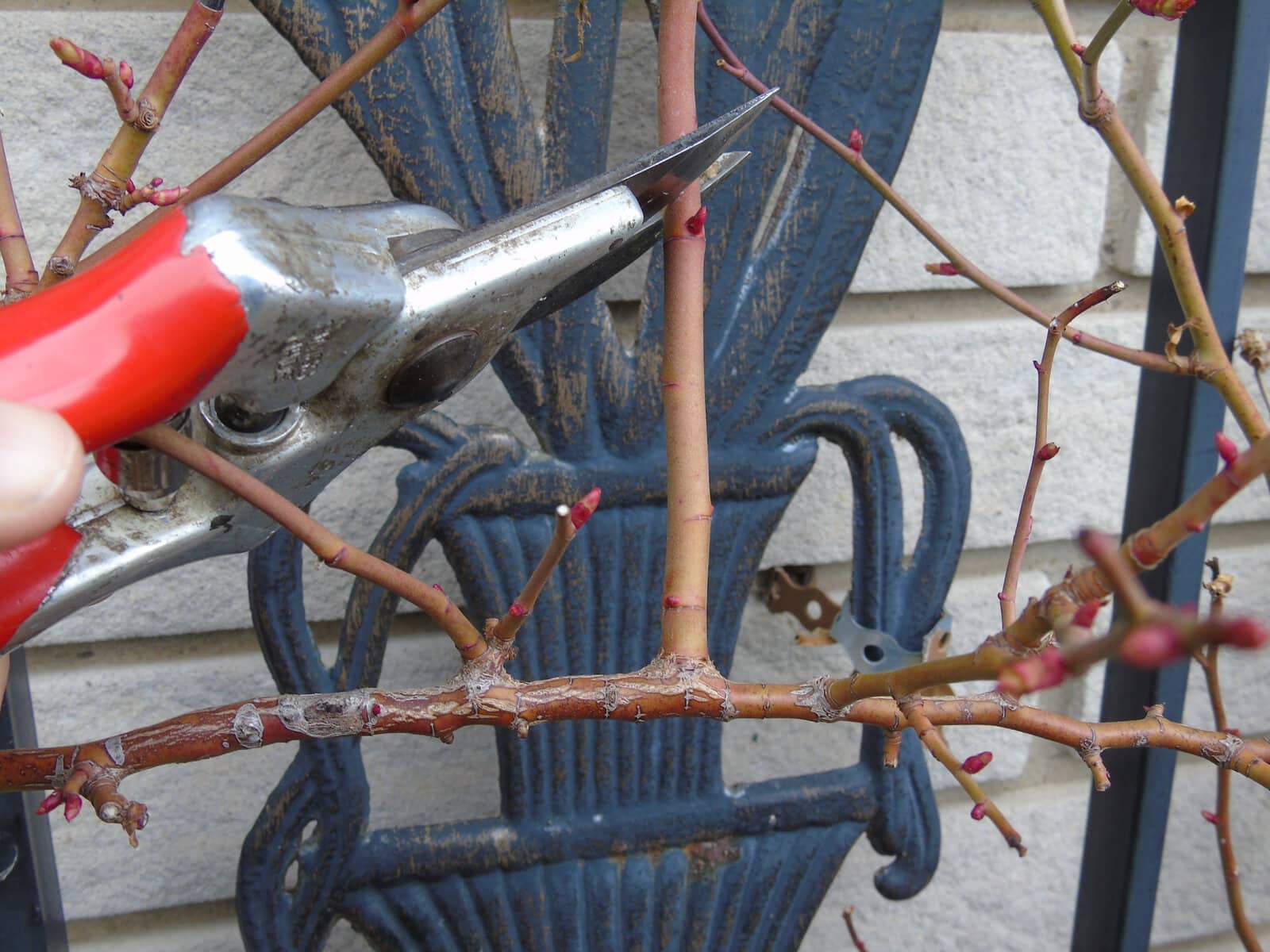How may of you just can’t wait to get out in your garden every spring and prune your roses?
It probably isn’t on the top of your list of things to do.
Knowing when and where to prune is difficult enough, but having to fend off all those thorns that feel the need to hook into your arms is a whole other thing.
If you have roses, though, you probably know that they do require some pruning to keep them growing healthy.
In fact, it is the best way to reduce disease and insect problems.
What does pruning a rose entail?
As with anything, there are always differing opinions on this subject, but here is what makes the most sense to me.
I know that there are people who always prune their roses down in the fall. There are several reasons why I do not recommend that you do.
Roses have trouble going dormant in the late fall and winter, that is why you will quite often see them still blooming into December with the leaves still green.
Therefore, you should always let the last flowers of the fall remain on the plant — this signals to the rose bush that it is time for them to go to sleep for the winter.
Pruning in the fall will stimulate them to keep growing into the winter and will result in more dieback on the canes.
The best time to prune your roses is the late dormant period-early spring just as the leaf buds are starting to swell.
A good indicator of the proper pruning time is when the forsythia plants come into bloom.
Regardless of the type of rose you have, the first thing to do is to remove any dead (discoloured), diseased or damaged canes.
The next step is to remove any weak canes or stems that cross through the center of the plant or are rubbing against another cane.
Roses have alternate bud arrangement as opposed to opposite bud arrangement where two buds are located across the stem from each other.
All the power or energy of a plant is in the tips of each branch. So, when you prune a branch shorter, the next bud down – the one that is now at the top – takes on the power and will develop into a new branch.
By pruning to an outward facing bud, it controls the direction of growth to go out from the plant instead of it growing back through the centre of the plant.
This helps improve air circulation, which helps to cut down on diseases.
Make sure that you cut the stem at a 45-degree angle with the higher edge being on the side of the bud.
It is important to always prune on an angle about a quarter of an inch above an outward facing bud.
The angled cut allows for drops of water to roll off the top of the cane and away from the bud.
Now that you have done the initial pruning of removing dead, diseased, damaged, weak and crossing canes, you now need to consider what type of rose it is.
Hybrid teas, floribundas, grandifloras, miniature and carpet roses
Once you have completed the first pruning steps as stated above, you can now start to prune back the remaining canes.
The number of canes you will have left depends on age and overall health of the plant.
Usually, you will have anywhere from three to eight canes and if those canes are healthy and the plant still has an open, symmetrical form, work with what you have.
Cut off about one-third of the original length of each cane.
Hybrid tea and carpet roses can be cut back a bit further, but make sure you are leaving at least three to five buds up from the base of the plant.
Climbing roses
The term “climbing rose” is a bit misleading as they do not climb of their own accord.
The canes will not twine themselves onto a trellis and do not cling to the wall or fence.
When training a climbing rose there is one critical and game-changing fact to keep in mind.
The vertical canes will only produce flowers at the tip of those canes.
So, to get that picture perfect image of a climbing rose that is loaded with flowers, you can carefully fend out flexible canes and tie them to a support so that the main canes are now growing horizontally.
Instead of there being flowers just at the tip of the cane, now every bud along the horizontal cane thinks that they are at the tip and each bud will produce flowers.
Once you have trained the main canes so that they have been fanned out, prune each lateral branch (branches off the main cane) back to two to three buds.
Now, your roses are trimmed up and ready for another growing season.
Oh, did I mention that you may want to put on a thick pair of gloves before you begin?
Joanne Young is a Niagara-on-the-Lake garden expert and coach. See her website at joanneyoung.ca.











